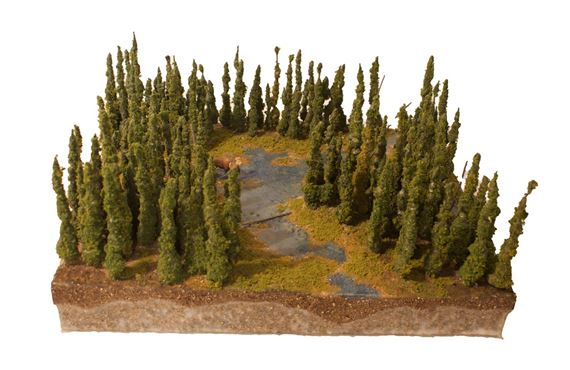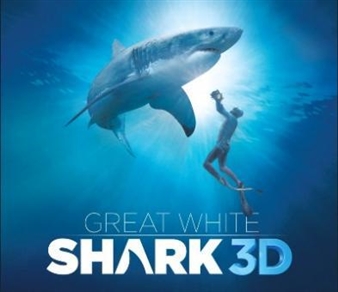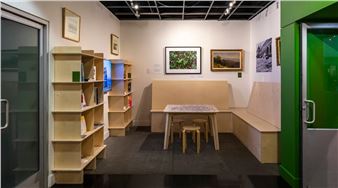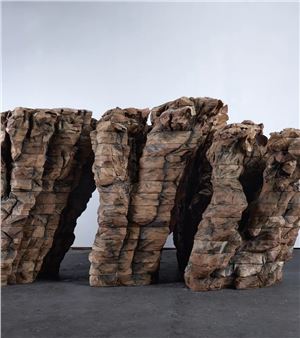On Thin Ice: AlaskaвҖҷs Warming Wilderness
On Thin Ice: AlaskaвҖҷs Warming Wilderness transports visitors to the Arctic to confront the startling impacts of climate change. Remarkable animals from the BruceвҖҷs natural history collections are paired with scale landscape models that showcase AlaskaвҖҷs diverse ecosystem. The installation highlights both subtle and dramatic shifts occurring across the Alaskan landscape, bringing attention to the impact of rising temperatures.
Alaska is warming more rapidly than any other state, with cascading consequences for its wildlife and ecosystems. At the surface, unspoiled ecosystems seem to extend to the horizon in all directions. Yet, in reality, the landscape is shifting right before our eyes. Scientists have recorded shifts as enormous as a glacier retreating for a mile over a few decades and as rapid as an entire lake draining in a single day. On Thin Ice highlights six different environments. For each, a pair of detailed models depicts the вҖңbeforeвҖқ and вҖңafterвҖқ states of landscapes, illustrating phenomena such as вҖңdrunken forestsвҖқ in which trees start to lean at random angles as the underlying permafrost slumps, and the march of geometric depressions across the tundra as ice wedging cracks permafrost into enormous hexagonal segments.
Exceptionally life-like mammal taxidermy from the Bruce MuseumвҖҷs own collection and on loan from the Fairbanks Museum allow visitors to get up close with the inhabitants of AlaskaвҖҷs wilderness. A star attraction is вҖңCharlie,вҖқ the Bruce MuseumвҖҷs new half-ton polar bear. Alaska's polar bears face great threats as the sea ice they heavily rely on for travel, hunting, and resting diminishes. Melting ice means more time on land, putting both polar bears and humans at risk. Another species featured in the exhibition is the muskox. This iconic Arctic creature resembles the Banta of Star Wars fame. Muskoxen show amazing adaptations including a special underlayer of wool known as qiviut that help them to survive sub-freezing temperatures. Despite their hardiness, these fascinating beasts are threatened by climate change. When warmer conditions cause rain to fall on snow and freeze, the grasses, sedges, and mosses that these herbivores rely on can become trapped beneath a sheet of ice. Visitors will also encounter tundra wolves, caribou, Arctic foxes and AlaskaвҖҷs state bird, the willow ptarmigan.
This family-friendly exhibition also invites visitors to interact and reflect. Young guests will enjoy touching natural history objects like caribou fur, matching footprints to the animals that made them, and guessing вҖңwhoвҖҷs callingвҖқ in an audio interactive that plays calls of Alaskan animals. Visitors inspired by the exhibition can learn more about how their own actions can make a difference. A special touch screen interactive in the exhibition highlights steps we can take in our daily lives to reduce our own carbon footprints and invites users to pledge an action.

Recommended for you
On Thin Ice: AlaskaвҖҷs Warming Wilderness transports visitors to the Arctic to confront the startling impacts of climate change. Remarkable animals from the BruceвҖҷs natural history collections are paired with scale landscape models that showcase AlaskaвҖҷs diverse ecosystem. The installation highlights both subtle and dramatic shifts occurring across the Alaskan landscape, bringing attention to the impact of rising temperatures.
Alaska is warming more rapidly than any other state, with cascading consequences for its wildlife and ecosystems. At the surface, unspoiled ecosystems seem to extend to the horizon in all directions. Yet, in reality, the landscape is shifting right before our eyes. Scientists have recorded shifts as enormous as a glacier retreating for a mile over a few decades and as rapid as an entire lake draining in a single day. On Thin Ice highlights six different environments. For each, a pair of detailed models depicts the вҖңbeforeвҖқ and вҖңafterвҖқ states of landscapes, illustrating phenomena such as вҖңdrunken forestsвҖқ in which trees start to lean at random angles as the underlying permafrost slumps, and the march of geometric depressions across the tundra as ice wedging cracks permafrost into enormous hexagonal segments.
Exceptionally life-like mammal taxidermy from the Bruce MuseumвҖҷs own collection and on loan from the Fairbanks Museum allow visitors to get up close with the inhabitants of AlaskaвҖҷs wilderness. A star attraction is вҖңCharlie,вҖқ the Bruce MuseumвҖҷs new half-ton polar bear. Alaska's polar bears face great threats as the sea ice they heavily rely on for travel, hunting, and resting diminishes. Melting ice means more time on land, putting both polar bears and humans at risk. Another species featured in the exhibition is the muskox. This iconic Arctic creature resembles the Banta of Star Wars fame. Muskoxen show amazing adaptations including a special underlayer of wool known as qiviut that help them to survive sub-freezing temperatures. Despite their hardiness, these fascinating beasts are threatened by climate change. When warmer conditions cause rain to fall on snow and freeze, the grasses, sedges, and mosses that these herbivores rely on can become trapped beneath a sheet of ice. Visitors will also encounter tundra wolves, caribou, Arctic foxes and AlaskaвҖҷs state bird, the willow ptarmigan.
This family-friendly exhibition also invites visitors to interact and reflect. Young guests will enjoy touching natural history objects like caribou fur, matching footprints to the animals that made them, and guessing вҖңwhoвҖҷs callingвҖқ in an audio interactive that plays calls of Alaskan animals. Visitors inspired by the exhibition can learn more about how their own actions can make a difference. A special touch screen interactive in the exhibition highlights steps we can take in our daily lives to reduce our own carbon footprints and invites users to pledge an action.

 ARTISTS
ARTISTS
















